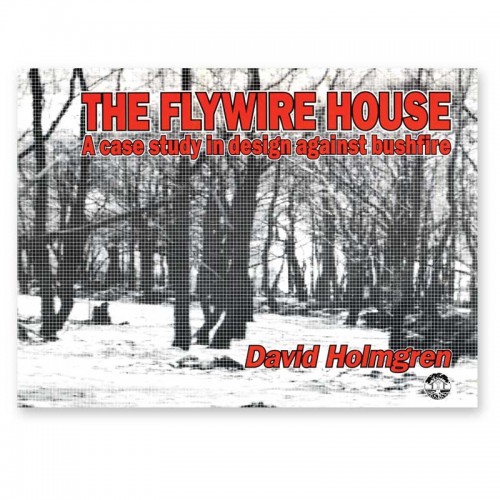Kyle and I are both well aware that bushfires in rural NSW are a case of 'when' rather than 'if', and that our safety will likely one day depend on having planned effectively for what to do when bushfires inevitably come our way. This seems particularly relevant when bushfire season is in full swing over summer.
So, at some stage in early January I started hunting for information on preparing rural properties far in advance of a fire risk.
Since it came up first on all my searches I started with the variety of widely publicised, government sponsored, bushfire safety fact sheets, figuring I could work backwards from there towards something more substantial (they always have that bit at the bottom that goes "for more information..."). However, I was a little disappointed.
I'm not particularly keen to simply take the advice from government factsheets at face value. It is reasonably likely that at some point in the next 20-30 years Kyle and I will be trusting our lives to these preparations so in my search for information I was after something more substantial than 30 pages worth of "that sounds like good advice to me". Given that the majority of this advice is aimed at more conventionally built houses (complete with ceiling cavities and wooden panelling, none of which we'll have) I was looking for some of the evidence underlying this advice so I could make an informed judgement about how it would apply to our rather different situation.
Now, don't get me wrong, I fully appreciate that the factsheets and bushfire plans and so on from the government and the RFS are probably responsible for saving many lives. I'm just not convinced that they're the best source of information available. The deeper I dug the more I found that any evidence that was actually available to me contradicted the advice in the official factsheets. However, the evidence also made me more confident of our ability to successfully design a property to be defendable - there's nothing like stories of people surviving firestorms in weatherboard houses to make you feel better about your earthen home's fire resistance.
Amidst my searches, I found a book by David Holmgren (unsurprising really, he seems to pop up whenever I have a question no one else has solved yet complete with a publication date sufficiently far in the past to make everyone else embarassed at not having figured it out themselves yet).
I bought a copy, and was suitably relieved when reading it. This was exactly what I was looking for - the book lays out an example of a property design that emerges as a consequence of good permaculture design and covers all aspects of the property that can act as structures and processes to seasonally prepare and defend the house itself. This makes a lot of sense to me, and is consistent with the stories I found of people experiences in defending their properties during bushfires.
So, at some stage in early January I started hunting for information on preparing rural properties far in advance of a fire risk.
Since it came up first on all my searches I started with the variety of widely publicised, government sponsored, bushfire safety fact sheets, figuring I could work backwards from there towards something more substantial (they always have that bit at the bottom that goes "for more information..."). However, I was a little disappointed.
I'm not particularly keen to simply take the advice from government factsheets at face value. It is reasonably likely that at some point in the next 20-30 years Kyle and I will be trusting our lives to these preparations so in my search for information I was after something more substantial than 30 pages worth of "that sounds like good advice to me". Given that the majority of this advice is aimed at more conventionally built houses (complete with ceiling cavities and wooden panelling, none of which we'll have) I was looking for some of the evidence underlying this advice so I could make an informed judgement about how it would apply to our rather different situation.
Now, don't get me wrong, I fully appreciate that the factsheets and bushfire plans and so on from the government and the RFS are probably responsible for saving many lives. I'm just not convinced that they're the best source of information available. The deeper I dug the more I found that any evidence that was actually available to me contradicted the advice in the official factsheets. However, the evidence also made me more confident of our ability to successfully design a property to be defendable - there's nothing like stories of people surviving firestorms in weatherboard houses to make you feel better about your earthen home's fire resistance.
Amidst my searches, I found a book by David Holmgren (unsurprising really, he seems to pop up whenever I have a question no one else has solved yet complete with a publication date sufficiently far in the past to make everyone else embarassed at not having figured it out themselves yet).
I bought a copy, and was suitably relieved when reading it. This was exactly what I was looking for - the book lays out an example of a property design that emerges as a consequence of good permaculture design and covers all aspects of the property that can act as structures and processes to seasonally prepare and defend the house itself. This makes a lot of sense to me, and is consistent with the stories I found of people experiences in defending their properties during bushfires.

No comments:
Post a Comment